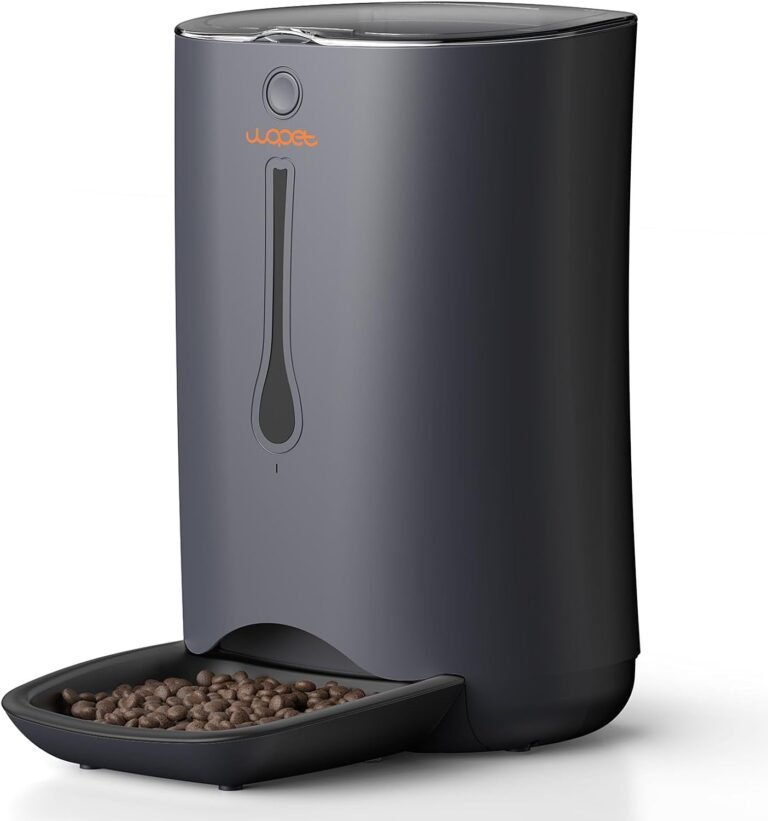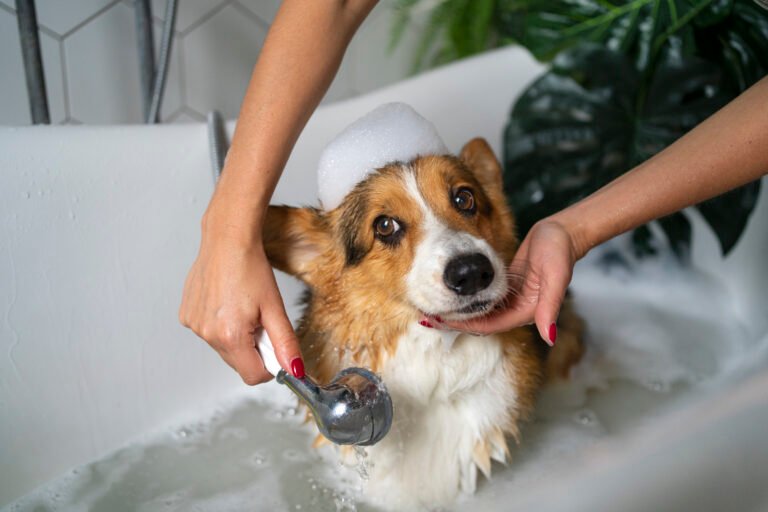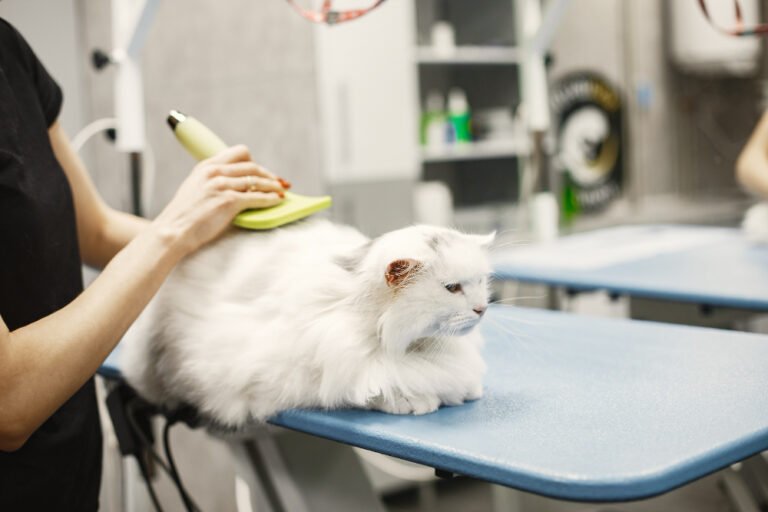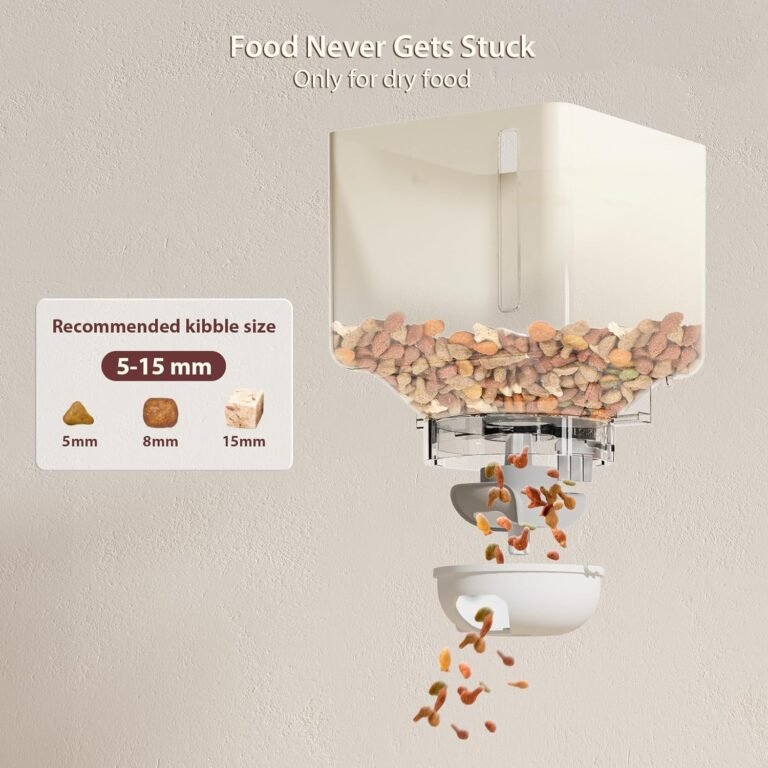First Aid for Pets: Essential Skills Every Owner Should Know
Pet first aid is an essential skill that every pet owner should know. Being prepared for emergencies and knowing how to provide basic first aid can make a significant difference in your pet’s health and well-being. In this article, we will explore the importance of pet first aid, common pet emergencies, and the signs of a pet emergency. We will also discuss how to prepare a pet first aid kit, basic first aid techniques for pets, and how to treat common pet injuries. Additionally, we will cover when to seek veterinary care and how to transport an injured pet safely. By learning these essential skills, you can be better equipped to handle emergencies and provide immediate care for your beloved pets.
Key Takeaways
- Pet first aid is crucial for every pet owner to know in order to provide immediate care in emergencies.
- Having a well-stocked pet first aid kit and knowing how to use it can save your pet’s life.
- Basic first aid techniques for pets include CPR, stopping bleeding, treating burns, and dealing with choking.
- Common pet injuries such as fractures, wounds, poisoning, and heatstroke require immediate attention and proper treatment.
- Knowing when to seek veterinary care and how to safely transport an injured pet are important for their recovery.
Understanding Pet First Aid

Why Pet First Aid is Important
Pet first aid is an essential skill every pet owner should know. Accidents and emergencies can happen at any time, and being prepared can make all the difference in saving your pet’s life. By knowing basic first aid techniques, you can provide immediate care and stabilize your pet until professional help is available. It’s important to have a pet first-aid kit on hand that includes essential items such as bandages, antiseptic solution, and tweezers. Additionally, knowing the signs of a pet emergency, such as difficulty breathing or severe bleeding, can help you recognize when immediate action is needed. Remember, being prepared and knowing what to do in an emergency can give you peace of mind and potentially save your pet’s life.
Common Pet Emergencies
Watch for signs like limping, whining, excessive licking, vomiting, dry heaving, inability to settle and lay still, or changes in behavior are all concerns. Consult your vet if you suspect your pet is in pain. How can I make vet visits less stressful for my pet? Use positive reinforcement, practice handling like rubbing their ears, paws, tail, and remember to stay calm yourself. Your pet looks to you to know how they should feel. If they pick up that you are scared for their health, or anxious in any way, they will feel the need to Fight, Flight, or Freeze. We created a calming and welcoming environment to help.
Signs of a Pet Emergency
Watch for signs like limping, whining, excessive licking, vomiting, dry heaving, inability to settle and lay still, or changes in behavior are all concerns. Consult your vet if you suspect your pet is in pain. How can I make vet visits less stressful for my pet? Use positive reinforcement, practice handling like rubbing their ears, paws, tail, and remember to stay calm yourself. Your pet looks to you to know how they should feel. If they pick up that you are scared for their health, or anxious in any way, they will feel the need to Fight, Flight, or Freeze. We created a calming and welcoming environment to help encourage a deep breath of relief for you, so your pet can benefit by staying calm and thus can receive treatment better and go home to heal faster. Discuss anxiety management options with your vet.
Preparing a Pet First Aid Kit

Essential Items for a Pet First Aid Kit
When preparing a pet first-aid kit, it’s important to have all the necessary items on hand. Here are some essential items to include:
- Bandages and gauze for wrapping wounds and controlling bleeding.
- Antiseptic solution for cleaning wounds and preventing infection.
- Scissors to cut bandages and remove fur from around wounds.
- Tweezers for removing splinters or foreign objects.
- Disposable gloves to protect yourself from bodily fluids.
- Digital thermometer to monitor your pet’s temperature.
It’s also a good idea to include any medications or supplements that your pet may need, such as joint supplements. These can help support your pet’s joint health and mobility. Remember to regularly check and replenish your pet first-aid kit to ensure that all items are up to date and in good condition.
Where to Store Your Pet First Aid Kit
It is important to store your pet first aid kit in a convenient and easily accessible location. You never know when an emergency might occur, so having the kit within reach is crucial. Consider keeping it in a designated area, such as a cabinet or shelf, that is out of reach of children and pets. This will ensure that the supplies are kept safe and ready for use when needed. Additionally, it is a good idea to label the kit clearly so that it can be easily identified in case of an emergency. Remember to check the expiration dates of the items in your kit regularly and replace any expired items. By storing your pet first aid kit in a suitable location, you can be prepared to provide immediate care to your furry friend in times of need.
Basic First Aid Techniques for Pets

CPR for Pets
When it comes to performing CPR on your pet, time is of the essence. Begin by checking for a pulse and breathing. If your pet is unresponsive, place them on a flat surface and start chest compressions. Remember to adjust the technique based on the size of your pet. For small pets, use your thumb and forefinger to compress the chest, while for larger pets, use the palm of your hand. Combine chest compressions with rescue breaths by covering your pet’s nose and mouth with your mouth and blowing gently. Continue CPR until your pet starts breathing or until you reach a veterinary clinic. It’s important to note that CPR is not a substitute for professional veterinary care, so seek immediate medical attention for your pet.
How to Stop Bleeding
To stop bleeding in your pet, follow these steps:
- Apply direct pressure to the wound using a clean cloth or gauze pad. This will help control the bleeding.
- Elevate the injured area if possible. Raising the wound above the level of the heart can help reduce blood flow to the area.
- Use a tourniquet as a last resort. Only use a tourniquet if the bleeding is severe and cannot be controlled by direct pressure.
Remember, it’s important to stay calm and focused during this process. Your pet may be scared or in pain, so try to provide reassurance and comfort. If the bleeding doesn’t stop or if you’re unsure about what to do, contact your veterinarian for further guidance.
Treating Burns and Scalds
When it comes to treating burns and scalds, it’s important to remember that pets have sensitive skin. Take extra care when handling their injuries to avoid further discomfort. Here are some steps you can take to provide immediate relief:
- Start by gently cooling the affected area with cool (not cold) water for about 10 minutes. This will help reduce pain and prevent further damage.
- After cooling, cover the burn or scald with a clean, non-stick dressing to protect it from infection.
- Monitor your pet closely for any signs of infection, such as redness, swelling, or discharge.
Remember, if the burn or scald is severe or covers a large area, it’s important to seek veterinary care immediately. Your veterinarian will be able to provide the necessary treatment and ensure proper healing.
Dealing with Choking
If your pet is choking, it’s important to act quickly and calmly. Choking can be a life-threatening emergency, but with the right knowledge and skills, you can help save your pet’s life. Here are the steps to follow:
- Assess the situation: Determine if your pet is truly choking by looking for signs such as difficulty breathing, pawing at the mouth, or gagging.
- Stay calm: Your pet can sense your emotions, so it’s important to remain calm and focused.
- Open the mouth: Gently open your pet’s mouth and check for any visible obstructions. If you can see the object, try to remove it using tweezers or your fingers.
- Perform the Heimlich maneuver: If the object is not visible or cannot be easily removed, you may need to perform the Heimlich maneuver. Stand behind your pet, place your hands just below the ribcage, and apply firm upward pressure.
- Seek veterinary care: Even if you are able to remove the obstruction, it’s important to seek veterinary care to ensure there are no underlying injuries or complications.
Remember, choking can be a serious and life-threatening situation, so it’s always best to consult with a veterinarian for guidance and assistance.
Common Pet Injuries and How to Treat Them

Fractures and Sprains
When it comes to fractures and sprains, it’s important to handle your pet with care. Bandages can be used to immobilize the affected area and provide support. If you suspect your pet has a fracture, it’s best to avoid moving them and seek veterinary care immediately. In some cases, a splint or cast may be necessary to aid in the healing process. Rest is crucial for recovery, so make sure to limit your pet’s activity and provide a comfortable space for them to rest. Pain management is also important, and your veterinarian can recommend appropriate medications to alleviate discomfort. Remember to follow your vet’s instructions and monitor your pet’s progress closely.
Wounds and Cuts
When it comes to treating wounds and cuts on your pet, it’s important to act quickly and calmly. Proper wound care can help prevent infection and promote healing. Here are some steps you can take:
- Clean the wound: Use a mild antiseptic solution or clean water to gently clean the wound. Avoid using hydrogen peroxide or alcohol, as they can be irritating.
- Apply pressure: If the wound is bleeding, apply gentle pressure with a clean cloth or bandage to help stop the bleeding.
- Bandage the wound: Depending on the size and location of the wound, you may need to bandage it to protect it from further injury and keep it clean.
Remember, if the wound is deep, large, or doesn’t stop bleeding, it’s important to seek veterinary care. Your veterinarian can assess the wound and determine the best course of treatment. HHOLOVE Automatic Cat Feeder with Camera
Poisoning
After the subheading ‘Poisoning’, it is important for pet owners to be aware of common pet injuries and how to treat them. Accidents happen, and knowing how to respond quickly and effectively can make all the difference in your pet’s recovery. Here are some common pet injuries and what you can do to help:
-
Fractures and Sprains: If you suspect your pet has a fracture or sprain, it’s important to keep them as still as possible and avoid putting any pressure on the injured area. Use a makeshift splint or bandage to immobilize the limb and seek veterinary care immediately.
-
Wounds and Cuts: Clean the wound with mild soap and water, and apply an antiseptic ointment. If the wound is deep or bleeding heavily, apply gentle pressure with a clean cloth or bandage and seek veterinary care.
-
Poisoning: If you suspect your pet has ingested something toxic, contact your veterinarian or a pet poison control hotline immediately. They will provide guidance on what steps to take and whether you need to induce vomiting.
-
Heatstroke: Signs of heatstroke in pets include excessive panting, drooling, weakness, and collapse. Move your pet to a cool, shaded area, apply cool water to their body, and seek veterinary care as soon as possible.
Remember, it’s important to stay calm and act quickly in these situations. Your pet’s well-being depends on your ability to provide immediate care and seek professional help when needed.
Heatstroke
Watch for signs like limping, whining, excessive licking, vomiting, dry heaving, inability to settle and lay still, or changes in behavior are all concerns. Consult your vet if you suspect your pet is in pain. How can I make vet visits less stressful for my pet? Use positive reinforcement, practice handling like rubbing their ears, paws, tail, and remember to stay calm yourself. Your pet looks to you to know how they should fell. If they pick up that you are scared for their health, or anxious in anyway, they will feel the need to Fight, Flight, or Freeze. We created a calming and welcoming environment to help encourage a deep breathe of relief for you, so your pet can benefit by staying calm and thus can receive treatment better and go home to heal faster. Discuss anxiety management options with your vet. What routine check-ups and tests does my pet need? Regular vet check-ups, vaccinations, and preventive tests like bloodwork and parasite checks are essential for your pet’s health. A wellness exam is meant to be a quick check-in and to catch anything at the
When to Seek Veterinary Care

Determining the Severity of an Injury
When assessing the severity of an injury in your pet, it’s important to pay attention to any signs of distress or discomfort. Limping, whining, excessive licking, vomiting, dry heaving, inability to settle and lay still, or changes in behavior are all concerns that should not be ignored. If you suspect your pet is in pain, it’s best to consult your vet for further evaluation and treatment. Remember, your pet relies on you to understand how they are feeling, so it’s important to stay calm and observant. Creating a calming and welcoming environment can help reduce stress during vet visits.
Knowing When to Call the Vet
Watch for signs like limping, whining, excessive licking, vomiting, dry heaving, inability to settle and lay still, or changes in behavior are all concerns. Consult your vet if you suspect your pet is in pain. How can I make vet visits less stressful for my pet? Use positive reinforcement, practice handling like rubbing their ears, paws, tail, and remember to stay calm yourself. Your pet looks to you to know how they should fell. If they pick up that you are scared for their health, or anxious in anyway, they will feel the need to Fight, Flight, or Freeze. We created a calming and welcoming environment to help
Transporting an Injured Pet Safely
When transporting an injured pet, it is important to prioritize their safety and comfort. Handle your pet gently and with care, avoiding any sudden movements that could cause further injury. Secure your pet in a sturdy and comfortable carrier to prevent them from moving around too much during transportation. Place a soft blanket or towel in the carrier to provide additional comfort. Keep the carrier level and stable to minimize any jostling or shaking. Avoid exposing your pet to extreme temperatures, whether it’s hot or cold. Monitor your pet’s condition closely during transportation and seek veterinary care immediately if their condition worsens or if you notice any signs of distress. Remember, your pet’s well-being is your top priority.
When to Seek Veterinary Care
Conclusion
In conclusion, being a responsible pet owner means being prepared for emergencies, understanding basic first aid procedures, and providing regular veterinary care. By having a pet first-aid kit on hand and knowing how to administer basic first aid, you can help ensure the well-being of your furry friend in times of need. Additionally, regular vet check-ups, vaccinations, and preventive tests are essential for maintaining your pet’s health. It’s also important to understand your pet’s behavior and body language to minimize stress during handling and restraint. Remember, a healthy lifestyle, proper nutrition, and exercise are key to keeping your pet happy and active. If you have any concerns or questions, don’t hesitate to consult with your veterinarian. Together, we can ensure the well-being of our beloved pets.
Frequently Asked Questions
How do I prepare for emergencies and first aid for my pet?
Have a pet first-aid kit on hand and know basic first-aid procedures.
When should I spay/neuter my pet, and what are the benefits?
Discuss spaying/neutering with your veterinarian. We commonly look to spay before the first heat cycle and males before 5 months. This helps prevent serious diseases and common behavioral problems.
What are the basic veterinary nursing skills that veterinary assistants should possess?
Veterinary assistants should possess basic nursing skills such as wound care, bandaging techniques, administering medications, preparing surgical equipment, monitoring vital signs, and communicating with pet owners.
How can I make vet visits less stressful for my pet?
Use positive reinforcement, practice handling, and create a calming and welcoming environment. Stay calm yourself as your pet looks to you for cues on how to feel.
What are the signs of common allergies in pets, and how can I manage them?
Allergies can manifest as itching, skin issues, or digestive problems. Your vet can help identify triggers and suggest management strategies, including special diets or medications.
What are the essential vaccinations my pet should receive?
Vaccinations are crucial to prevent various diseases in pets. Consult your veterinarian for a tailored vaccination schedule, but commonly, pets need vaccinations for diseases like rabies, distemper, parvovirus, and kennel cough.







